
Roman Vasilenia / Shutterstock
Except for a house (and perhaps a rather extensive collection of holographic Pokémon cards), buying an automobile will be one of the most expensive purchases you ever make. This will create a hefty bill on its own, and we’re not even talking about all of the hidden costs of buying a new car. Even if your vehicle is all paid off, it’ll still need maintenance over the years, especially after you’ve had your vehicle for a while.
You certainly don’t want to skimp on any essential repairs, as your car could break down sooner than you planned, meaning you would just have to buy a new one and start the process all over again; however, many people out there spend far more than they should on their vehicles due to outdated beliefs. Sometimes, words of wisdom aren’t actually very wise, or they’re from another time when cars needed more repairs than they do now. Thanks to technological advancements, a lot of modern cars don’t require as much oversight, yet plenty of folks spend a ton of money every year on maintenance costs that aren’t necessary.
Even if you only save a few hundred bucks annually, that’s still more money in your pocket for other expenses. Keep the following tips in mind, and if you also follow various tricks to use less gas while driving, your bank account will thank you.
Myth: You should change your oil every 3,000 miles
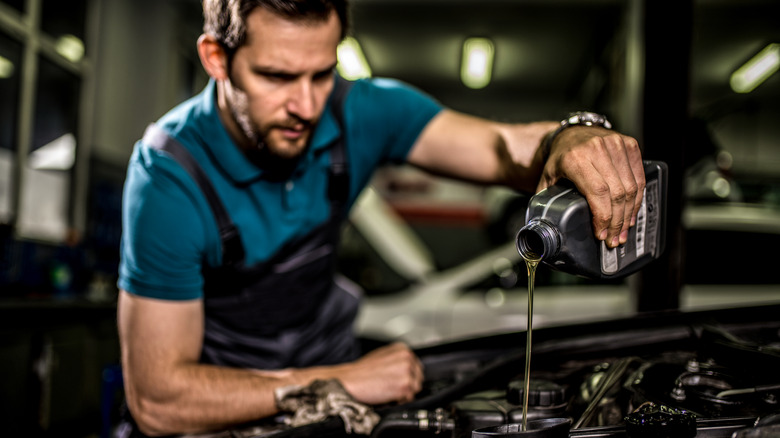
Djelics / Getty Images
Conventional wisdom dictates that every car requires an oil change every 3,000 miles. You’ve likely noticed that after you take your car into a shop for such a change, the mechanic probably puts a sticker on the inside of your windshield recommending that you bring your car back in after another 3,000 miles (with the specific odometer number printed on it for good measure). Of course, oil change spots want you to come back as frequently as possible so they can make more money, but for the most part, getting this service done every 3,000 miles is no longer necessary.
The 3,000-mile rule comes from decades ago when engines and motor oil weren’t as efficient as they are today. Most modern vehicles can go anywhere between 5,000 and 10,000 miles between oil changes, although the exact number will vary by vehicle. You can look into your owner’s manual to get a specific number for your car. Waiting longer between oil changes ultimately results in more money in your pocket because this service can really add up over time — the average cost of an oil change falls between $35 and $125, depending on whether you’re using conventional or synthetic oil.
Taking your car in less frequently not only saves you money, it’s also better for the environment. Waiting longer between changes keeps more oil out of landfills and groundwater, so you’re doing your part to keep the planet green. That said, if you drive an older vehicle, you may still need to abide by the 3,000-mile rule, so when in doubt, check your owner’s manual.
Myth: Premium gas is always better than regular
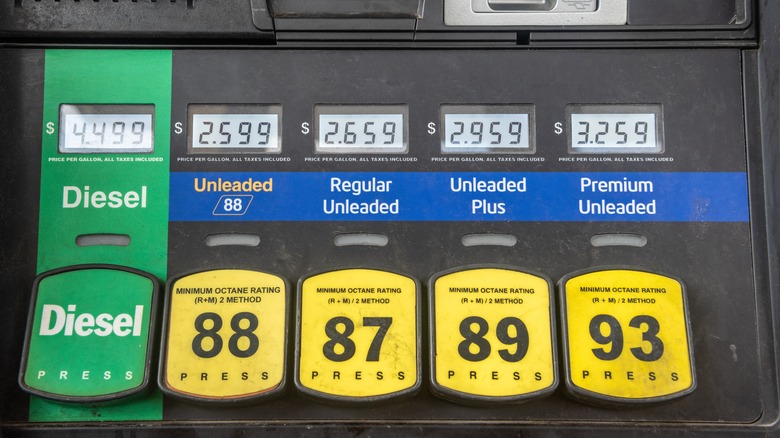
Alizada Studios / Shutterstock
You go to the gas station and are met with a variety of options. Sure, regular gas is less expensive, but then that premium choice catches your eye. Surely premium gas is better than regular in some way, right? Not necessarily. Unless your car is specifically designed to take premium gas, there’s no reason to spend more money to fill up your tank.
This is just one of several gasoline myths you need to stop believing. Some cars specifically require premium fuel because they have high-compression engines or turbochargers that rely on premium to work most efficiently; putting regular gas in these vehicles can result in performance issues. Your owner’s manual will tell you if your car should have premium gas; however, these instances are few and far between, and most cars you see on the road today get by just fine with regular gasoline. Filling your car with premium won’t hurt it in any way, but you’ll be throwing your money away for no reason.
On top of all of this, it goes without saying that you definitely don’t want to fill up a gasoline-powered engine with diesel. You may find your engine stalling quickly if you try to drive after this blunder.
Myth: You should inflate your tires to the number directly on the side
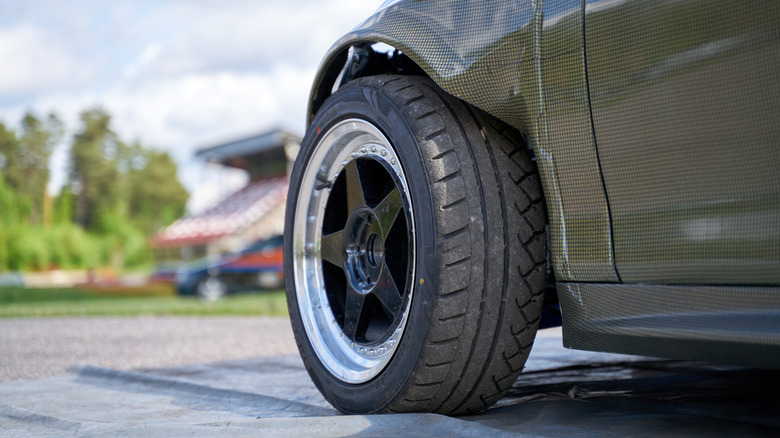
OlegRi / Shutterstock
Everyone should know about the dangers of driving with under-inflated tires. If one tire’s pressure is significantly below the recommended range, you risk having a blowout on the road; however, you should watch out for over-inflated tires, too. If you (like far too many people) get your numbers from the tire’s sidewall, you may be over-filling them.
If you look on the side of your tire, you should see a series of numbers circling the hubcap. One of these will be the tire pressure, and this will be evident because the number will be followed by «PSI.» This is the maximum tire pressure you want in that specific tire, but front and rear tires may have different PSI levels depending on the type of vehicle you drive. Unfortunately, this number isn’t automatically the ideal pressure level for that tire.
As is usually the case, you should check your owner’s manual to see how many PSI should be in each tire. This information should also be available on a sticker located on the door jamb. The number located in these places is what the PSI should ideally be. You may be able to go a bit higher, but driving on over-inflated tires can lead to uneven wear over time and may require replacing the tires sooner than anticipated.
Myth: You should warm up your vehicle before driving in the cold

Andrii Medvednikov / Shutterstock
If you live in a cold climate, you’ve probably heard the advice that you should turn your vehicle on and let it idle for 10 minutes before actually getting on the road. Similar to the oil-change myth, this once served a purpose, but it’s now no longer really needed outside of some exceptions (more on that later on).
In the past, vehicles had chokes that prevented their engines from receiving proper airflow, which could cause an engine to stall out if the driver attempted to get out on the road immediately after turning the ignition. This required letting it sit idle for a few minutes to get everything flowing smoothly. Due to more efficient vehicles, it’s now largely a myth that you should warm up your car in the cold first. In fact, you can warm up your car faster by getting on the road right after starting the engine. Plus, you’re further polluting the environment by letting your vehicle idle needlessly each time you need to drive.
There are exceptions to this rule. For example, electric vehicles and hybrids can still benefit from getting a few minutes of warm-up time while still being plugged in before heading out. But any modern gas-powered car can get going pretty much immediately, so there’s no need to panic if you forgot to warm your car up before making your coffee if you’re already running late for work in the winter.
Myth: You want to winterize your car for the changing season
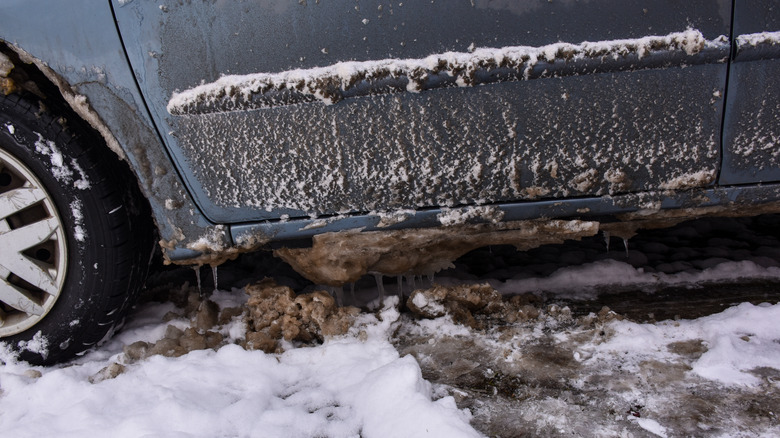
RacheeLynn / Shutterstock
This is another myth that contains a bit of nuance. Anyone who lives in an area with drastically different temperatures in the summer and winter will know that there’s some maintenance needed between those months. For example, in the winter, you may want to adjust your vehicle’s tire pressure to be a few PSI levels higher than what they normally are. In fact, you may want to install some snow tires depending on your city. But if you’re considering swapping out all of your car’s fluids with more specific winter varieties, you probably don’t need to bother.
Again, this varies depending on how old your vehicle is and what the owner’s manual suggests, but in general, most oil and coolant used these days will do you just fine, no matter what temperature it is outside. Some drivers go back and forth between using summer oil, which has a higher viscosity for the warmer season, and a winter oil, which has a lower viscosity; these days, however, many drivers can merely opt for a fluid that’s suitable for either climate, such as SAE 10W-30 motor oil.
While this is a myth you don’t necessarily want to take at face value, it’s important to consider your car’s needs, particularly if it’s on the older side. Some winterization may be necessary, but you should know what kind of oil goes into your car anyway to determine if you need a different kind when it gets cold out.
Myth: Your car needs an engine tune-up every six months
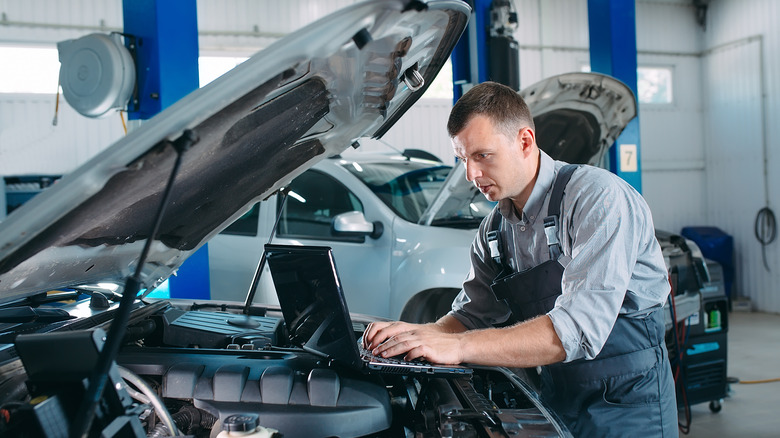
David Tadevosian / Shutterstock
Getting an engine tune-up once every six months seems like decent advice. It’s kind of like going to the dentist once every six months; even if everything feels all right, it’s still a good idea to have a professional take a look to make sure no disasters are brewing without your knowledge. While you should still go to the dentist twice a year, it’s generally not necessary to get a tune-up using that same timeline. Instead, go with mileage-based maintenance.
Obviously, if your check engine light is flashing, you should get your car examined right away. Otherwise, you should get certain components replaced within certain milestones, such as replacing the fuel filter once every 25,000 miles or replacing the spark plugs every 40,000 miles. A general tune-up when nothing’s really needed won’t do much good, although the mechanic will likely try to sell you a new air filter or other component just to get some money out of you.
If anything, you may want a general check-up once every 50,000 miles or so just to ensure the fluids, wires, and brakes all look good, but that will depend on how much and how often you drive. Granted, cars with non-electric ignition systems, which tend to be on the older side, may require a tune-up more frequently, such as once every 10,000 miles.
Myth: You should purchase fuel additives for the sake of your car
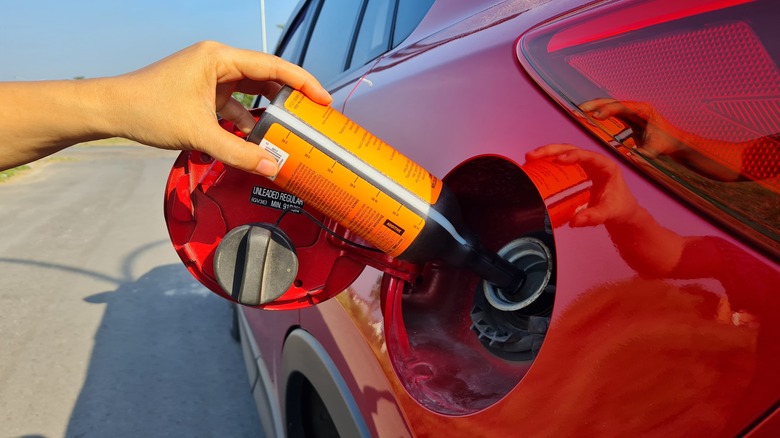
Andri wahyudi / Shutterstock
Most cars require gasoline to run, and gas just so happens to be filled with all kinds of troublesome deposits that, over time, can gunk up your vehicle’s insides. This is why so many shops want to pour fuel additives into your gas tank, as these promise to clean up the engine and prevent deposit build-up. While additives can be useful to an extent, it’s important to remember that any gasoline you use in your car already comes with detergents to clean the inside.
A U.S. law passed in 1995 requires the addition of detergents in any gas sold. That means by filling up your car, which you do already, you’re helping clear out your car’s engine and preventing too much gunk from forming inside. You don’t even need the premium gas, as even the regular variety still has all these additives. Exxon even boasts about its gas’ various compounds on its website, saying, «Available in three octane levels, our Synergy gasoline has been engineered to help clean up intake valves and improve gas mileage and performance.»
This doesn’t mean you should never use additives, but you don’t need to use them all the time, and you definitely shouldn’t overdo it, as too many could actually damage your car’s gauges. As tends to be the case with many of these tips, older cars may benefit more from fuel additives, so ultimately, you need to consider each individual vehicle’s needs.
Myth: You want to replace your tires when the tread is 2/32
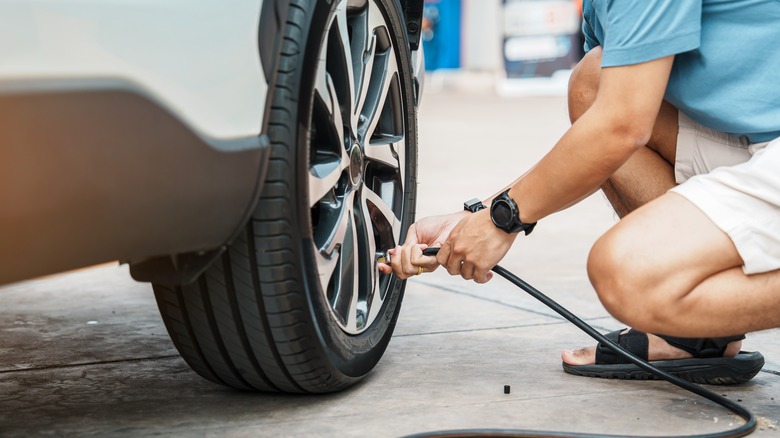
Jo Panuwat D / Shutterstock
Maintaining sufficient tread on your car’s tires is essential to ensure you drive as safely as possible. Many guidelines recommend replacing tires when their tread hits 2/32″, but that’s cutting it a bit too close — your tires will be practically bald by the time they reach that depth. Instead, it’s a good idea to swap out your tires when their tread hits 4/32″.
This may seem counterintuitive if you’re trying to save money, but you have to consider your safety and the potential costs of driving on dangerous tires, which could lead to accidents if you’re not careful. Tire tread helps tremendously when you’re applying the brakes and trying to make a safe stop. Treads with a depth of 4/32″ are already cutting it close, but they’re still much safer than treads that are only 2/32″. If a vehicle halts in front of you and you can’t come to a complete stop, you could get in an accident, which is going to cost substantially more than merely paying for some new tires.
Sufficient tread is all the more important if your location gets frequent rain, as this will make the road slicker and require a greater distance for your car to reach a complete stop. Remember: It’s better to pay for some new tires now than to buy a whole new car after a crash.
Myth: All car maintenance should be done at a dealership

Reshetnikov_art / Shutterstock
Your car starts depreciating in value pretty much as soon as you drive it off the lot; however, you can take solace in the fact your vehicle should last for quite some time. On the off-chance that something in your car breaks, you’re covered by a warranty for at least a few years. Of course, you need to read this warranty carefully to make sure you don’t accidentally do something that voids the terms, and many people seem to believe that taking your car to an independent auto shop for any kind of routine maintenance will prevent the warranty from covering anything later.
This isn’t inherently true — in fact, consumers have the Magnuson-Moss Warranty Act of 1975 on their side. This law offers consumers protection from any company’s deceptive warranty practices, including car dealerships. There may be certain jobs you need to get done at a dealership, such as replacing a recalled part; however, this should be a free service, so you should take it to the dealership (or a dealership-approved shop) anyway. Otherwise, any routine maintenance services, such as replacing a belt or rotating the tires, can be done pretty much anywhere. Just make sure you keep records of every repair performed so that you can prove to a dealership you’ve done your part to keep your vehicle in good condition.
As with all rules, though, there are exceptions. For example, if a mechanic installs an aftermarket part incorrectly and this leads to further damage, it could void your warranty. Make sure to read all paperwork in full so you know what you should and shouldn’t do.
Myth: It’s fine to use household dish soap to wash your car

Paul Bradbury / Getty Images
Sooner or later, your car’s going to get dirty. It happens. You can either take your vehicle into a specialized car wash facility to get it looking as good as new, or if you have space at home, you can clean it yourself. Anyone who wants to go the DIY route, though, take heed: Only rely on specific car wash materials. You don’t want to just grab a bottle of dish soap out of the kitchen and take it into the driveway, or before long, your car may look a little worse for wear.
This may seem counterintuitive — all soap should be the same, right? Unfortunately, dish soap tends to be too abrasive for car exteriors. Using it may actually deteriorate the clear wax coating, which protects your vehicle from the elements. There are some household products you can use to wash a car, like baking soda, but in general, it’s probably for the best to stick with items explicitly designed for vehicle use.
When seeking proper car care, it’s crucial to separate fact from fiction. Getting advice from your grandfather on how to keep a vehicle running may no longer be viable in the modern day, so always do your research. And as always, when in doubt, check the owner’s manual.